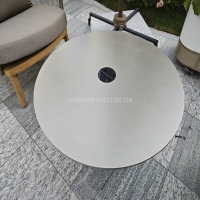Welcome to the website for landscape facilities products and knowledge.
How does the table’s design support the use of predictive analytics for space utilization?
Modern table designs are revolutionizing how organizations leverage predictive analytics for space optimization. Unlike traditional furniture, today's intelligent tables incorporate embedded sensors that continuously monitor usage patterns, occupancy rates, and interaction behaviors. These sophisticated surfaces capture real-time data about when and how spaces are being utilized, providing the foundational information necessary for accurate predictive modeling.
The integration of IoT sensors within table structures allows for the collection of granular data points, including duration of use, frequency of occupancy, and even the number of users per session. This rich dataset feeds into machine learning algorithms that can forecast future space requirements with remarkable precision. By analyzing historical patterns and current trends, organizations can predict peak usage times, identify underutilized areas, and make data-driven decisions about space allocation.
Advanced table designs also facilitate the implementation of predictive maintenance strategies. Sensors can detect wear patterns and usage intensity, enabling facilities managers to anticipate maintenance needs before they become critical issues. This proactive approach minimizes downtime and ensures that spaces remain functional and available when needed.
Furthermore, the physical design of tables themselves contributes to more accurate space utilization predictions. Modular tables with configurable components allow for flexible arrangements that can be tracked and analyzed. The data collected helps organizations understand which configurations yield the highest productivity and collaboration, enabling them to optimize layouts for specific tasks and team sizes.
The synergy between table design and predictive analytics extends beyond mere occupancy tracking. Modern systems can analyze the quality of space utilization by monitoring how different table designs influence user behavior, collaboration patterns, and overall productivity. This holistic approach enables organizations to create environments that not only maximize physical space but also enhance user experience and operational efficiency.
Through the strategic implementation of smart table designs, organizations can transform their approach to space management. The continuous flow of data from these intelligent surfaces provides the insights needed to create adaptive, responsive environments that evolve with changing organizational needs while optimizing resource allocation and reducing operational costs.
Related search:

Recommendation
Outdoor stainless steel table with solar-powered ambient lighting feature - excellent design.